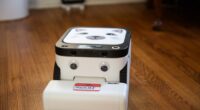Share this @internewscast.com

NASHVILLE, Tenn. — Residents across Tennessee are noticing unwelcome visitors in their homes—small insects that look like ladybugs but are causing quite a stir. These intruders are actually Asian lady beetles, and they are making their presence known as they search for warmth during the fall season.
Asian lady beetles, often confused with ladybugs, have a tendency to congregate on buildings and can easily make their way indoors if they find an entry point. Unlike their harmless counterparts, these beetles are distinct and can cause a bit of trouble when they invade in large numbers.
Originating from Asia, Asian lady beetles (Harmonia axyridis) were first identified in the United States in Louisiana back in 1988, according to the U.S. Department of Agriculture. While they are beneficial for controlling agricultural pests such as aphids, their presence in homes is less appreciated.
What are Asian lady beetles?
These beetles can be identified by a distinct “W” or “M” marking located behind their heads, as noted by U.S. Pest Protection. Typically, they display an orange or tan color, contrasting with the bright red hue of the common ladybug.
What’s the difference between ladybugs and Asian lady beetles?
Though ladybugs are mostly harmless, Asian lady beetles can cause some discomfort when they gather in large numbers. They are known to emit a foul odor and can bite, though the bites are not harmful, according to American Pest Control Inc.. The bites may be mildly painful but pose no threat of disease or long-term effects.
Unlike ladybugs, which are mostly harmless, a large infestation of Asian Lady beetles can reportedly produce an unpleasant odor. The beetles can also bite, and American Pest Control Inc. said the bites can be mildly painful, but don’t cause any diseases or lasting harm.
Can you prevent them from entering your home?
To prevent an invasion, pest control experts recommend sealing any cracks or crevices where insects may enter. This can include caulking doorframes, repairing damaged window screens and adding rubber seals to the bottom of doors.
Experts also recommend beginning a routine pest treatment plan to get rid of the beetles. The treatment can reportedly interrupt the bug’s pheromone cycle to make sure they can’t find their way back to your home.
How to get rid of them
Vacuum, don’t crush — this is the method recommended by pest control companies. If crushed, Asian lady beetles can release a yellowish fluid that will stain surfaces.
Some homeowners may try DIY repellents, such as vinegar, essential oils, or cloves, but experts say those solutions are only temporary.
To learn more about Asian lady beetles, follow this link.









